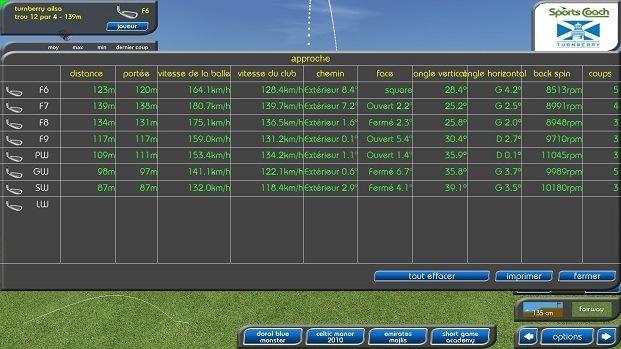Getting people to try single length irons is generally fairly easy. When I had one of my sets in the bag, people were always keen to have a swing and see what they thought. That is a good thing in my opinion. It makes no difference to me what people play. I don’t make or sell golf clubs and I am as happy to see a set of vintage blades as the latest distance irons. As long as people enjoy their golf, it is all good. However, it does frustrate me a bit when people don’t give something like single length a chance because they read somewhere online that chipping with single length irons is next to impossible when this just isn’t true.
- You can chip with single length irons
- There is nothing wrong with gripping down on a single length club
- You actually have a greater variety of shots
- bunker shots can be problematic with one length
Chipping With Single Length Irons Isn’t All That Different
Before saying anything else, of course you can chip (pitch, bump and run, etc) with single length irons clubs, obviously. You can chip with virtually any club in the bag after all. The question is whether it is easier to do so or actually more difficult. I can give you a personal viewpoint on this which, of course, might be different to someone else’s experience. For me, single length irons gave me several distinct advantages in terms of short game but also a couple of areas where I found they weren’t really well-suited.
As a taller golfer, I really enjoyed the possibility of being able to stand up a little bit straighter around the green. It felt comfortable, was no doubt good for my back and gave me quite a bit of confidence, something that is key (at least for me) in the short game. It felt like a very comfortable transition from full shots to putting. I think this is partly because I was using the same clubs as for full iron shots. Familiarity breeds confidence in my opinion. It also felt somewhat similar to putting because I wasn’t bent over and it felt like my eyes were over the ball, much like my putting stroke.
It does feel quite different in one or two ways from chipping with a wedge however. For example, visually, a lot of single length wedges don’t look like your traditional bladed wedge. I had a set of Pinhawk irons that included both gap and sand wedges (at 50 and 55 degrees respectively) and these didn’t look much like the ‘normal wedges’ I was using previously. If you sit them next to a Titleist, Cleveland or whatever bladed wedge, the look is quite different, less bladed, larger head size and more offset.
This is a problem for many people and honestly I initially thought that would be the case for me too. However, as I mentioned previously, it brings the wedges in line with the rest of the iron set and that is probably a good thing for most of us.
The Same Head Weight in All the Clubs
The other issue is head weight. Single length irons, apart from a couple of exceptions, have the same specs in all clubs and this includes head weight. This means that my one length Sandwedge had a head weight that was perhaps 30 grams lighter than a standard sandwedge. I will come back to effects this had in the bunker a little bit later, but it does feel different around the green when chipping. Swingweight (the feel of the club when swinging) might be the same or close, but in my experience, the feel on short games shots isn’t the same.
This wasn’t a negative for me, but neither was it a positive. It was simply not the same as every other set I had tried. The first few times you try to chip with a one length iron is probably going to give you mixed results because of this head weight issue. It is really just a case of getting used to it. The one key for me was hitting the ball a little bit more firmly and a little less the idea of letting the clubhead do the work and simply swing through the ball.
One area where I found that this head weight issue was a problem was in the rough, especially thicker rough. The standard shot here might be to take a sandwedge or lob wedge and hit the ball hard, using the loft, bounce and weight to get the ball out. I did find that I was less consistent here and sometimes left the ball in the rough trying to be too cute.
Gripping Down on Single Length Irons
One thing that always surprises me is that people see gripping down or choking up if you prefer as being cheating when they play with single length. Although this is a valid way of hitting shots with any club in the bag, people suddenly think that it shouldn’t be possible with one length. Why not? The aim is to have the same club (apart from loft) through the bag from long irons to wedges but why not use the same methods as with other clubs? I obviously hit most of my shots with the same stance, grip etc but I also varied grip and ball position on occasions in order to hit a particular shot.
Around the green, this is certainly the case. I enjoyed gripping down a bit on my Pinhawk one length wedges to hit shots, especially those 50/60 yard pitches. The same is true with the Cobra forged one length when I gripped down on the pitching wedge quite a bit. I feel like this gave me a greater variety of short game shots but still keeping things the same because all my clubs were the same.
Of course, it is a real advantage to use the built-in consistency in a single length set to create different shots. In fact, one of the real advantages is that you can vary loft without having to manipulate variables like stance, ball position, opening the face etc.
As an example, let’s imagine that you are five yards off the green and about to hit a chip. You can set up in exactly the same way and simply use a different club to create a different shot. I can pick the sandwedge and hit a shot that flies 3/4 of the way if I need to get over some thick rough. I can keep everything exactly the same and see a club that looks very similar as I address the ball and hit a shot that hops forward a yard or two then rolls to the hole simply by using a six or seven iron instead. Same set up, same feel, only loft changes and gives a different result.
There was one area where I struggled with single length irons in the short game however and that was in the bunkers.
Bunker Problems with Single Length
For whatever, reason, I never got truly comfortable with a single length sand wedge. I am a fairly reasonable bunker player. Not great, but certainly not the worst either. I know how to hit a standard bunker shot and splash the ball out onto the green hitting behind and taking a small amount of sand with the ball. Whether it is with a 56 or a 60, I feel like I know how to use the bounce, swing aggressively though the ball and get it out.
I have a few ideas why this might have been the case. I think it was partially connected to the club length which, in my case, was maybe 2.5 inches longer than a standard sandwedge. The bunker is one area where I don’t really want to feel that I am standing up tall. I prefer to feel like I am squatting low into the sand. I think the other big reason was connected to weight. In the sand, bounce and weight are your friend. The lighter head weight just didn’t let me feel that I could explode the ball out as I hit down into the sand. Gripping down as I like to do in bunkers actually made this situation worse because the club felt even lighter.
This problem actually led me to a fairly common solution for a lot of single length players. I kept the single length irons for all my full shots and for most of my chipping. I then used a standard 56 degree wedge for bunkers or playing from think rough. In my opinion, this gives the best of both worlds for most of us.
Overall then, I would disagree with the common wisdom that single length makes the short game more difficult. I think that it lets the average golfer hit a variety of short game shots without having to get too cute with one club. At the very least, anyone who is interested in single length should probably try to borrow a club or two and play around by the short game area rather than just hitting full shots.



